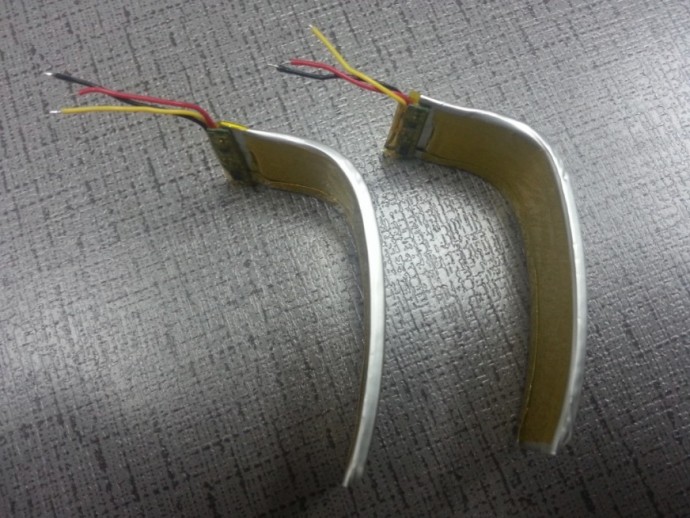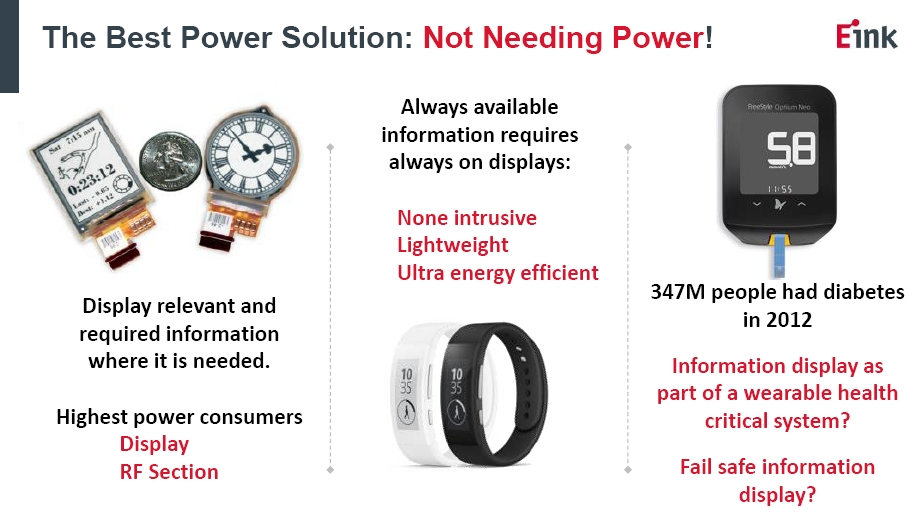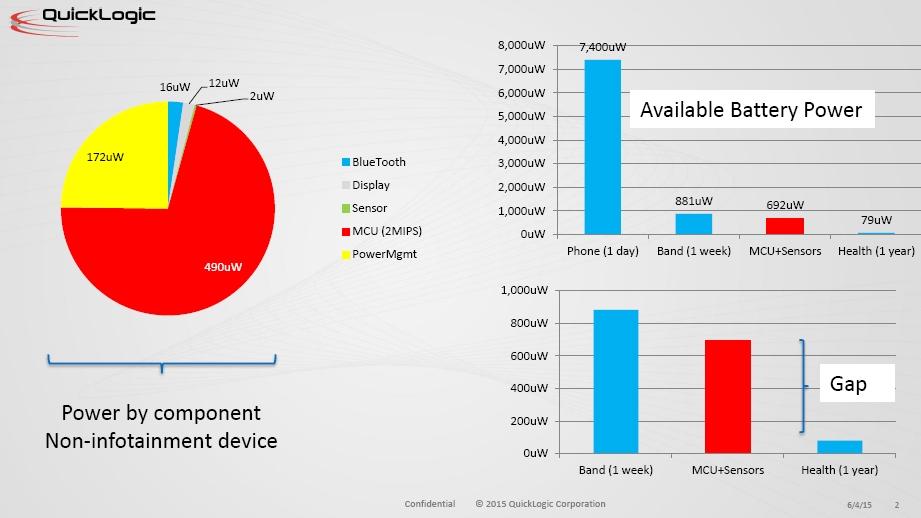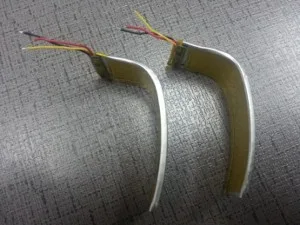The 2015 SID Display Week Wearable-Flexible Market Focus Conference hosted a session and panel discussion on the role of and limitations for wearables imposed by power consumption and battery size, type and capacity. The speakers were Andy Crump, Ascent Batteries; Giovanni Mancini, Eink; Dominic Pajak, ARM; Tim Saxe of Quicklogic; and Sam Massih of InvenSense. Respectively, these speakers were representative of the battery, low power display, CPU core, customer-specific standard chip product, and MEMs sensor supply base.
Andy Crump from Ascent Batteries addressed shaping batteries for wearable devices. Ascent focuses on providing functionality while engineering “wearables that don’t look like a wearable” device. Ascent is targeting new applications and markets for luxury good, non-sports applications, women’s jewelry and fashion, medical, and tracking devices for pets and children. Ascent’s battery solutions include shaped, integrated batteries (for example see photo below).
 Source: Ascent Batteries
Source: Ascent Batteries
Ascent considers the “cost of power,” considering the use of primary versus secondary (rechargeable) batteries and the need to choose the right technology for a battery application. Ascent offers shaped and rectangular batteries that are designed to take into account high charge or discharge rate requirements. Ascent primarily delivers Li-polymer battery solutions with high energy density, in stacked and rolled constructions.
Giovanni Mancini of Eink claimed that the “best power solution is not needing power” as he emphasized the lower power consumption of the firm’s electrophoretic displays (graphic below).
 Source: Eink
Source: Eink
Eink is right to emphasize its display technology’s strong points of low power consumption, flexible form factor and adequate contrast – a solution that has led to significant design wins.
Dominic Pajak of ARM the well-known chip design and IP provider, cited the Pebble smartwatch as an ARM processor application. He emphasized the energy efficiency, and ARM’s wide spectrum of hardware enabling diverse applications. Pajak described these energy optimized systems citing their use of lower power sleep states, minimizing active duty cycle, and noting that intelligent system and software design are necessary for a successful low power design.
Tim Saxe of Quicklogic provided a good overview of the power consumption by subsystem for a non-infotainment device and the battery power and power consumption of several classes of products as illustrated below.
 Source: Quicklogic
Source: Quicklogic
In the Quicklogic example non-infotainment device, the microcontroller and power management circuitry are the major power consumers while the Bluetooth, display and sensor complement dissipate only 30 uW. The fitness band example, consuming 881 μW and providing 1 week of battery life, was an interesting wearable device design benchmark. Tim Saxe’s example highlights the need for sub mW power consumption and he went on to say that energy harvesting means it can provide only about 80-90 μW of power.
Paul Gray of IHS, the moderator of the panel discussion with the above presenters had formulated several questions beforehand for discussion. The first concerned the list of topics that could or should be addressed in the design of very low power systems. Crump of Ascent Batteries answered that products offering fewer features can consume less power and in fact the cost saving that result may also provide for a better battery. The InvenSense speaker answered that in a GPS-equipped device, using the GPS on a 25% duty cycle combined with using other included sensors to provide dead reckoning navigation, saves power and is very accurate in reporting a track. He also pointed out the wearable device use cases are only just now being worked out and additional insights on reducing power consumption may be forthcoming.
Gray’s next question was “How much is industry using off the shelf parts versus parts optimized for wearables?” The panelist’s responses suggested that improvement may be forthcoming. For example, one speaker believed that components with 5x factors of improvement were possible, another said he was beginning to see wearable optimized components coming to market, while other speakers referenced the need for software and app developers to make power optimizing designs as well as using power optimized hardware. The discussion continued at length on a wide range of topics related to power consumption and battery life and their implications. The elephant is apparently going to continue to inhabit the room. – Phil Wright

